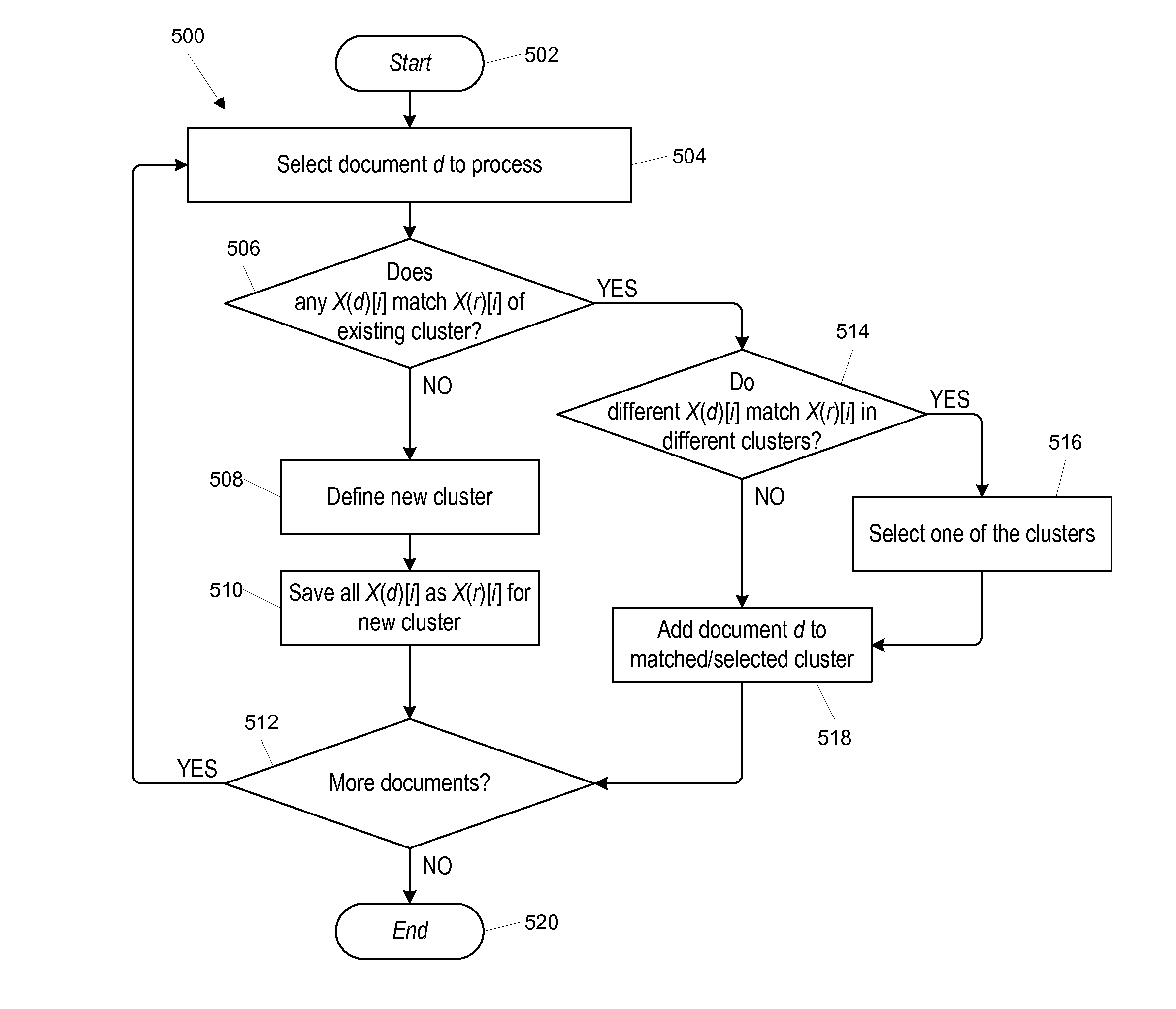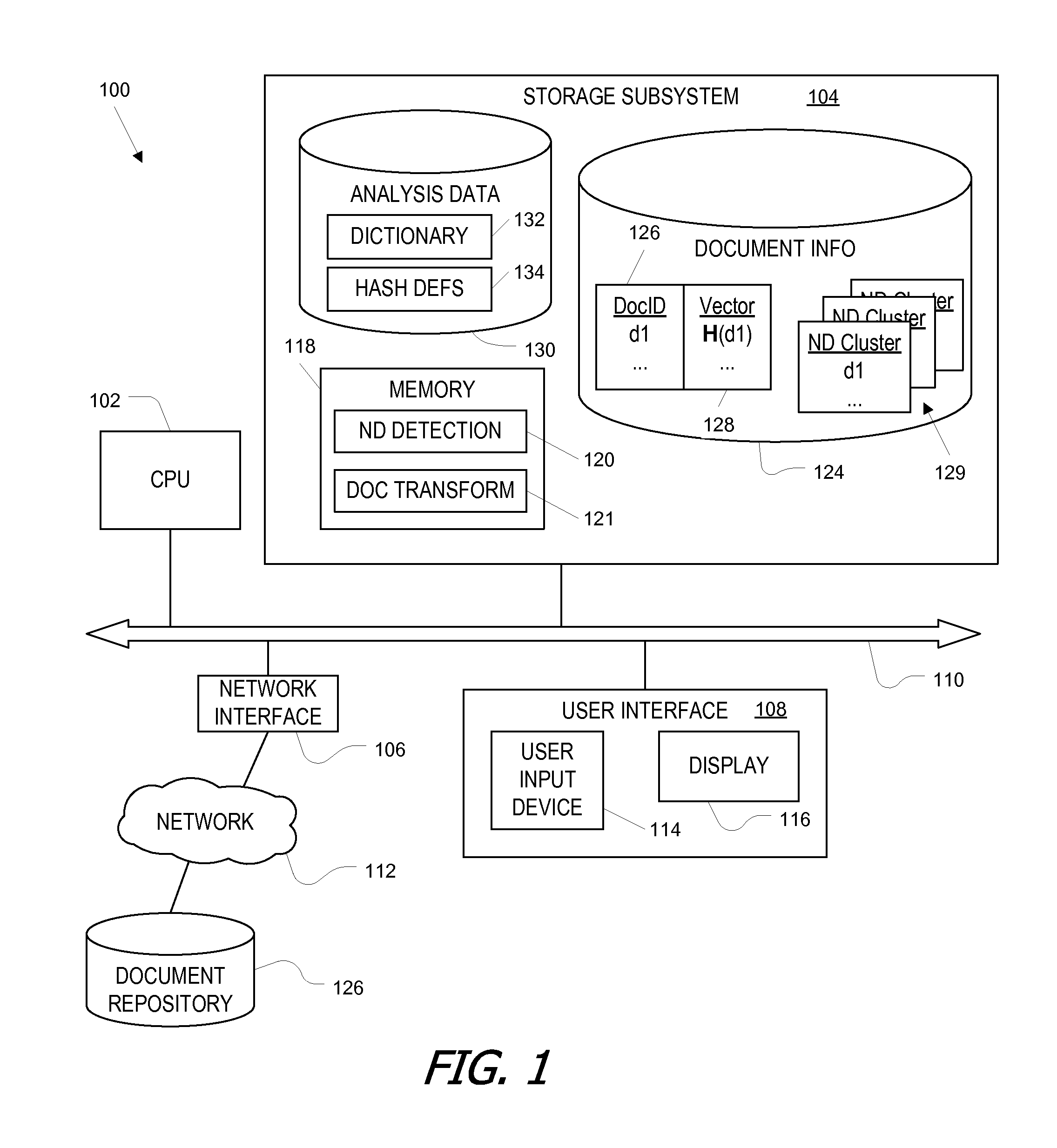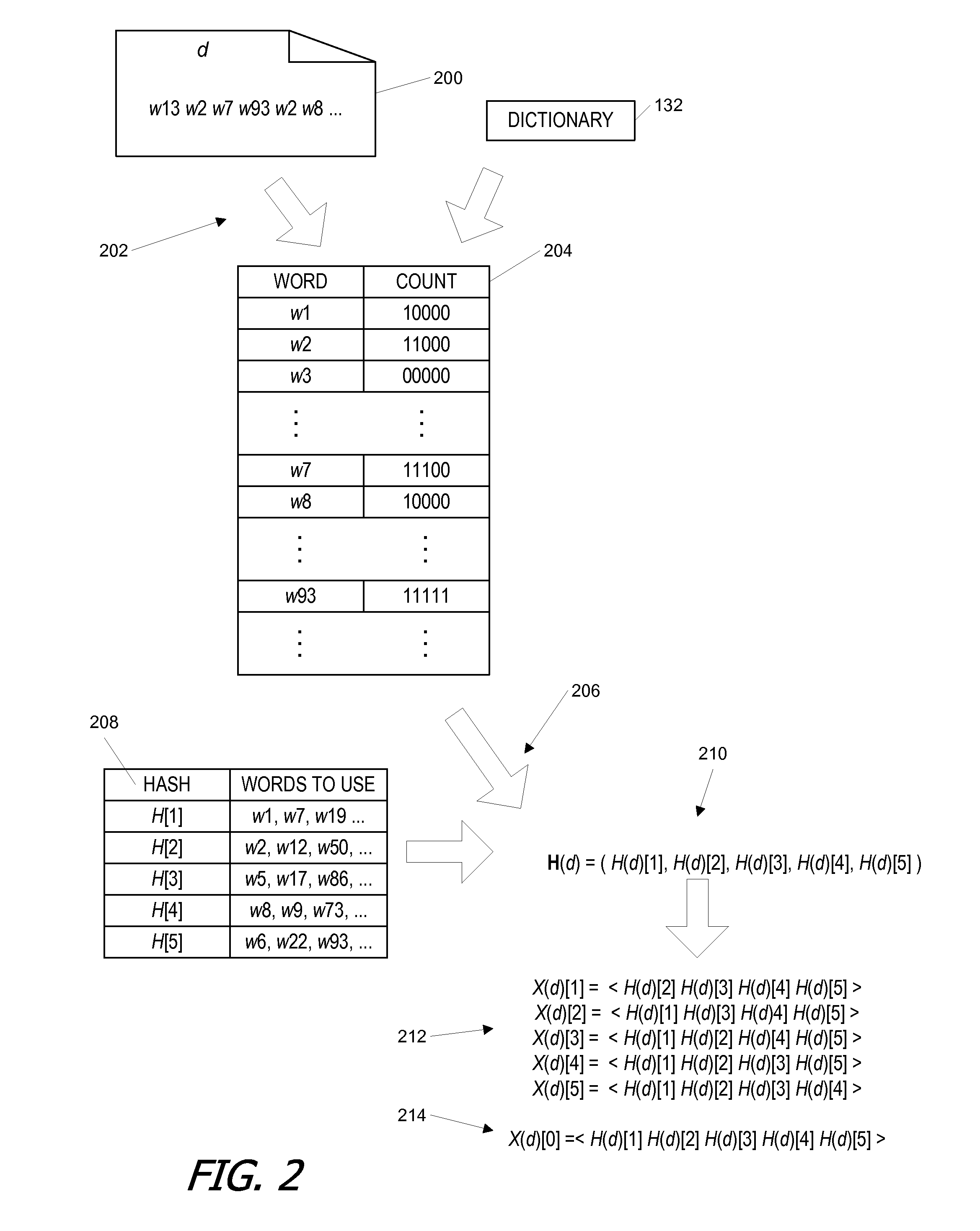Clustering of near-duplicate documents
a clustering and document technology, applied in the field of automatic document analysis, can solve the problems of near-duplicate documents rely on non-scalable techniques and/or techniques, and the identification of near-duplicate documents remains a challenging problem for automated document analysis systems, and achieve the effect of increasing the maximum edit distan
- Summary
- Abstract
- Description
- Claims
- Application Information
AI Technical Summary
Benefits of technology
Problems solved by technology
Method used
Image
Examples
Embodiment Construction
[0029]Embodiments of the present invention provide automated techniques for identifying clusters of near-duplicate document in which addition of documents (or groups of documents) to clusters can be constrained such that each document within the cluster has at least a threshold level of similarity to each other document within the cluster. In some embodiments, each document is represented as a vector in a high-dimensional “word” space with axes corresponding to different words and component values corresponding to the number of occurrences of the words. The high-dimensional content vector for a document can be projected onto a much smaller number (N) of different (preferably though not necessarily orthogonal) axes, with each projection being based on a different subset of the words making up the word space. In one embodiment, the N projections are made using a hash function that is applied separately to a bit string representing the occurrence pattern of words in N different subsets...
PUM
 Login to View More
Login to View More Abstract
Description
Claims
Application Information
 Login to View More
Login to View More - R&D
- Intellectual Property
- Life Sciences
- Materials
- Tech Scout
- Unparalleled Data Quality
- Higher Quality Content
- 60% Fewer Hallucinations
Browse by: Latest US Patents, China's latest patents, Technical Efficacy Thesaurus, Application Domain, Technology Topic, Popular Technical Reports.
© 2025 PatSnap. All rights reserved.Legal|Privacy policy|Modern Slavery Act Transparency Statement|Sitemap|About US| Contact US: help@patsnap.com



